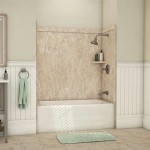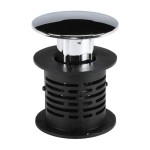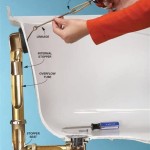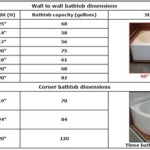Change Bathtub To Walk In Shower: Essential Considerations
Transforming your bathtub into a walk-in shower offers numerous benefits for accessibility, safety, and style. However, embarking on this project requires careful planning and consideration of several essential aspects.
Space Requirements: Before proceeding, ensure your bathroom has adequate space to accommodate a walk-in shower. Consider the dimensions of your existing bathtub and the specific shower design you intend to install. Allow for sufficient room for comfortable movement and access to bathroom fixtures.
Accessibility Features: Accessibility is paramount when converting to a walk-in shower. Incorporate features such as grab bars, slip-resistant flooring, and a bench or seat for stability and safety. Choose a showerhead that provides adequate water coverage and flexibility.
Plumbing and Electrical: Changes to plumbing and electrical systems may be necessary to accommodate the new shower. Consult a licensed plumber and electrician to assess the existing infrastructure and ensure that it meets the requirements of the new shower design. Consider the location of pipes, drains, and electrical outlets.
Waterproofing: Proper waterproofing is crucial to prevent water damage to walls and floors. Install a waterproof membrane behind the shower walls, ensuring it extends underneath the shower pan or base. Use waterproof adhesives and sealants to minimize the risk of leaks.
Tile Selection: Choosing appropriate tiles is essential for both aesthetics and functionality. Ceramic or porcelain tiles offer durability, moisture resistance, and a wide range of design options. Consider slip-resistance ratings to ensure safety.
Ventilation: Proper ventilation is vital to prevent moisture buildup and mold growth. Install an exhaust fan to remove excess humidity from the bathroom. Consider installing a steam shower as an additional amenity to enhance relaxation and well-being.
Lighting: Lighting plays a crucial role in creating a safe and inviting space. Use a combination of natural and artificial lighting. Install bright, evenly distributed lighting to ensure visibility and reduce tripping hazards.
Budget and Timeline: Changing a bathtub to a walk-in shower can involve significant expenses. Determine your budget and secure financing if necessary. Establish a realistic timeline to manage the project effectively and avoid delays or unexpected expenses.
Professional Installation: While it may seem tempting to tackle this project yourself, professional installation is strongly recommended. Experienced contractors have the knowledge, skills, and tools to ensure proper installation, plumbing, electrical work, and waterproofing, minimizing the risk of costly mistakes or safety hazards.

Master Bathroom Renovation Converting A Bathtub Into Walk In Shower Our Handcrafted Life

The Pros And Cons Of Converting A Standard Tub Into Walk In Shower Naperville

Tub To Shower Conversion Norfolk Va Affordable Installation

How To Convert A Tub Into Walk In Shower Budget Dumpster

Should I Replace My Bathtub With A Shower

How To Convert A Tub Into Walk In Shower Budget Dumpster

How To Convert A Tub Walk In Shower Diy Guide

Tub To Shower Conversion Expert Opinion Metropolitan Bath Tile

2024 Tub To Shower Conversion Cost A Complete Guide

7 Bathtub To Shower Conversions That Add Style Space Sweeten Com








